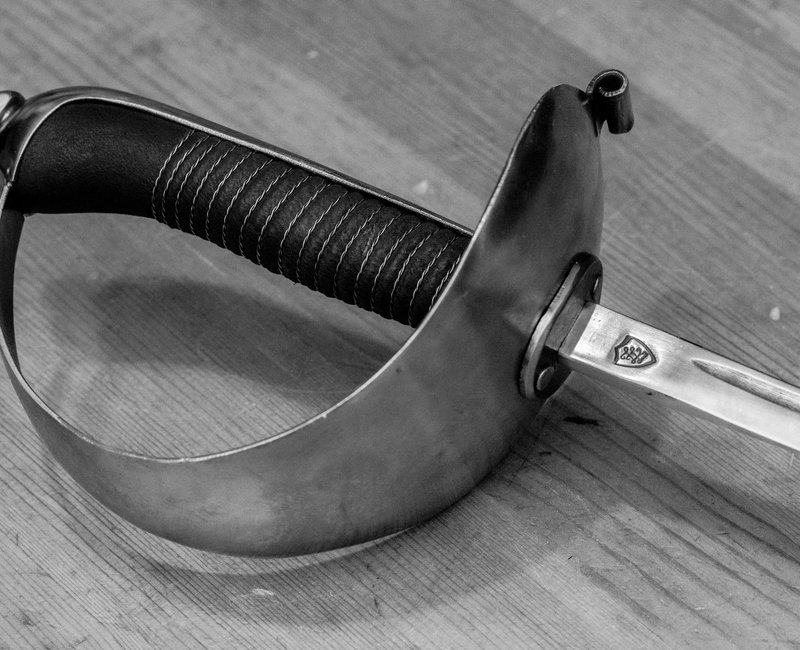
Sabre
The late 19th-century duelling sabre was a slender, single-edged sword designed for use in civilian duels and fencing competitions. It evolved from military sabres but was adapted to the needs of controlled, ritualised combat. The blade was typically lightweight, slightly curved or straight, and tapering to a point, making it suitable for both cutting and thrusting actions.
The hilt often featured a protective knuckle guard or basket, offering hand protection during engagements while allowing for a secure and agile grip. The design prioritised speed and precision over durability, reflecting the emphasis on skillful technique rather than battlefield robustness.
This period saw duelling sabres become a focal point of fencing schools, particularly in Italy and Hungary, where the art of sabre fencing flourished. Techniques emphasised fluid cuts, powerful ripostes, and elegant footwork. The sabre was used not only as a weapon of personal honour but also as a tool for refining martial skill and demonstrating athletic prowess in competitive and training contexts.
The Sabre system of Sanz
The sabre system of Don Simon de Frias Sanz, as detailed in his 19th-century treatise, represents the Spanish approach to sabre fencing. This style reflects Spain’s historical fencing traditions, integrating elements of both classical and military applications. The sabre used in Sanz’s system typically features a slightly curved, single-edged blade, with a robust design suitable for thrusting and cutting techniques. The hilt often includes a protective knuckle bow, providing hand protection during dynamic engagements.
Sanz’s method emphasizes balance, precision, and fluidity. His techniques focus on controlling the opponent’s blade through effective parries, counter-attacks, and strategic use of distance. The Spanish style often employs angular footwork and calculated blade movements, maintaining a methodical and tactical approach to sabre fencing.
The Sabre system of Parise
The sabre of Masaniello Parise, detailed in his seminal 1884 treatise Trattato di Scherma di Spada e Sciabola, is representative of the Italian classical fencing tradition. The weapon is a light, straight, or slightly curved sabre with a sharp edge and a pointed tip, designed for the demands of both thrusting and cutting. The hilt includes a simple knuckle guard or curved shell to protect the hand, emphasizing mobility and control.
Parise’s sabre system is grounded in precision, elegance, and speed, with a strong emphasis on thrusting over cutting, reflecting the Italian school’s preference for linear fencing techniques. His method incorporates smooth, fluid footwork and well-timed blade actions, including feints, parries, and ripostes, to outmaneuver the opponent. Parise’s system bridges the gap between martial utility and fencing as an art, showcasing the refinement of late 19th-century Italian sabre fencing.